7 Best Grass Types for Pensacola, FL
BY AUSTIN GEIGER | APRIL 16TH, 2023 | FLORIDA, LAWN CARE, PENSACOLAIn Florida, the conditions can be harsh. This is especially true if you live in a coastal area like Pensacola. It isn’t always easy to grow plant life when you’re dealing with the beating sun, pounding rain, salt-heavy ocean winds, and the occasional hurricane. The best grass types for Pensacola are hardy ones that can stand up to these environmental conditions the Sunshine State has to offer.
- Warm-Season vs. Cool-Season Grasses
- 7 Warm-Season Grasses for Pensacola, FL
- FAQ About Pensacola Grass Types
- Choose Plants and Grasses for Your Pensacola Landscape
Warm-Season vs. Cool-Season Grasses
Grass types are classified as either warm-season or cool-season grasses. Warm-season grasses thrive in areas with higher temperatures and lots of sun, whereas cool-season grasses will do better with lower temperatures and less sun. The growing season for warm-season grasses is summer, while for cool-season grasses, it’s fall and early spring.
7 Warm-Season Grasses for Pensacola, FL
Pensacola is firmly within the warm-season grass zone, which means that the best grass types will be warm-season ones that thrive in its sunny days and consistent heat. Warm-season grasses prefer areas with lots of sun and temperatures between 80 and 95 degrees Fahrenheit. They experience most of their growth in the summertime.
1. Bahiagrass
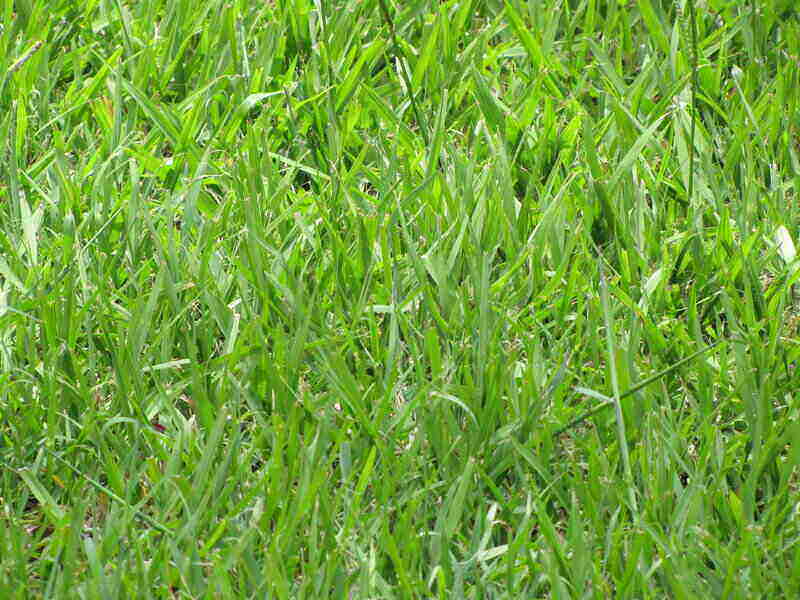
Photo Credit: Forest and Kim Starr / Flickr / CC BY 2.0
Bahiagrass is a warm-season grass that’s very well-suited to Florida. Its coarse texture combined with its lack of foot traffic tolerance unfortunately make it a poor choice for backyard barbecues or games of football. However, its decent drought tolerance ensures that it will fare better than some other grasses during the dry season.
Bahiagrass has an attractive, vibrant green color. It has great resistance to diseases and pests, does well in soil with low fertility, and grows very quickly, making it a good hardy lawn that can grow where other grasses might struggle.
Classification: Warm-season
Spreads By: Stolons
Shade Tolerance: Low, but more than Bermudagrass
Drought Resistance: Moderate
Foot Traffic Tolerance: Low
Maintenance Needs: Frequent mowing
Mowing Height: 3-4 inches
Potential for Disease: Low
Potential for Pests: Low
Soil pH: 5.5-6.5
Soil Type: Prefers sandy or loam soils with low fertility
Other Notes: Poor tolerance for salt spray
2. Bermudagras
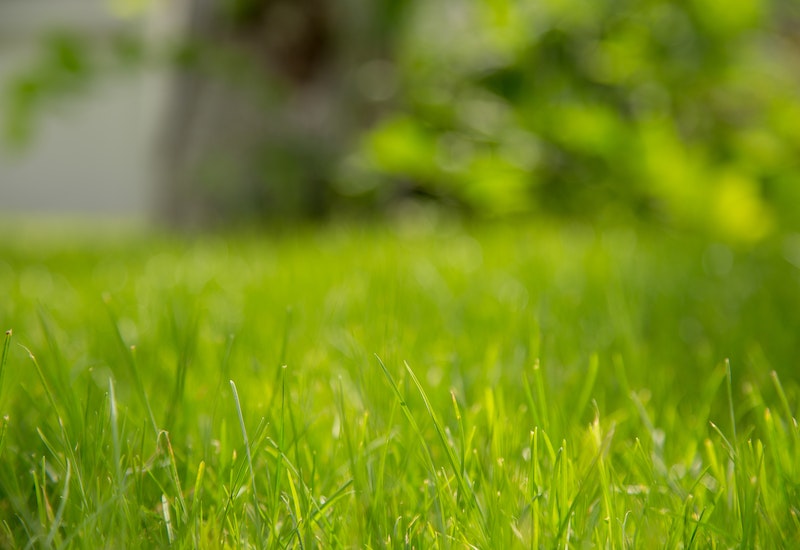
Photo Credit: Pexels
Bermudagrass is another warm-season grass that grows very well in Florida, one that stands out even among other warm-season grasses as a sun-lover. It has great resistance to both droughts and foot traffic tolerance and does well in pretty much any soil type, so if you want a hardy lawn that you plan to use often, bermudagrass may be right for you.
Unfortunately, Bermudagrass does have its downsides. One of them is a vulnerability to diseases and especially pests, which means that you’ll have to keep a close eye out for ant hills on your lawn. Another is the amount of maintenance it requires, which is good if you like being outside and working on your lawn, but not so much if you’re looking for a low-maintenance grass.
Classification: Warm-season
Spreads By: Stolons and rhizomes
Shade Tolerance: Low; prefers full sun
Drought Resistance: High
Foot Traffic Tolerance: High
Maintenance Needs: High; requires frequent mowing and regular dethatching and fertilization
Mowing Height: 1.5-2.5 for common Bermudagrass, 0.5-1.5 for hybrid cultivars
Potential for Disease: Moderate
Potential for Pests: High
Soil pH: 6-6.5
Soil Type: All
Other Notes: Good salt tolerance
3. Blue Gramagrass
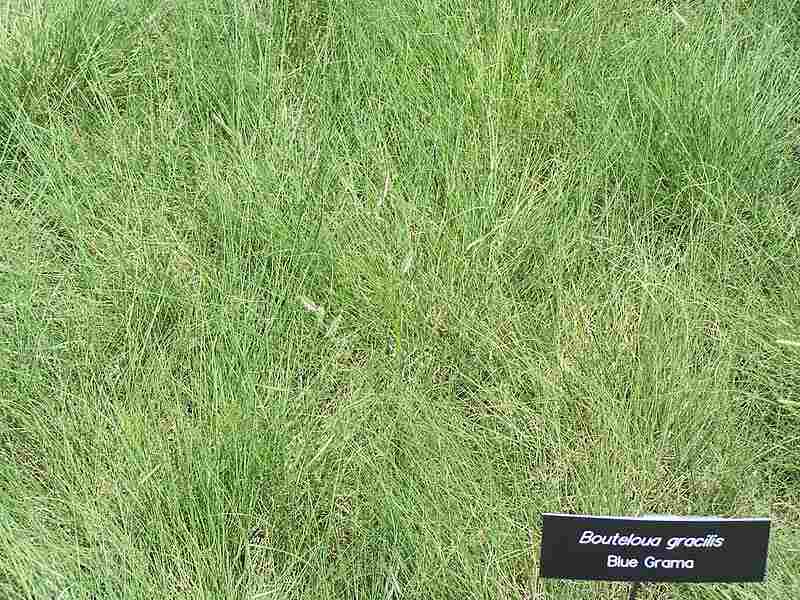
Photo Credit: SEWilco / Wikimedia Commons / CC BY-SA 3.0
Blue grama is a bit of an unusual grass type in that it grows in thick bunches. It’s a very low-maintenance grass that requires little water, making it a good ground cover or accent grass for xeriscaping. Blue grama also mixes well with other grass types such as buffalograss in a typical grass lawn or can be used by itself.
In terms of salt tolerance, blue grama stands out, which makes it a good choice for Pensacola in particular. It’s unfortunately not very tolerant of foot traffic, however, so be careful where you step when using this grass type.
Classification: Warm-season
Spreads By: Rhizomes
Shade Tolerance: Low
Drought Tolerance: High
Foot Traffic Tolerance: Low
Maintenance Needs: Low
Mowing Height: 2-3 inches
Potential for Disease: Low to moderate; most prevalent disease is fungal rust
Potential for Pests: Low
Soil pH: 6.6-8.4
Soil Type: Does not tolerate wet or poorly drained soil
Other Notes: Very good salt tolerance
4. Centipedegrass
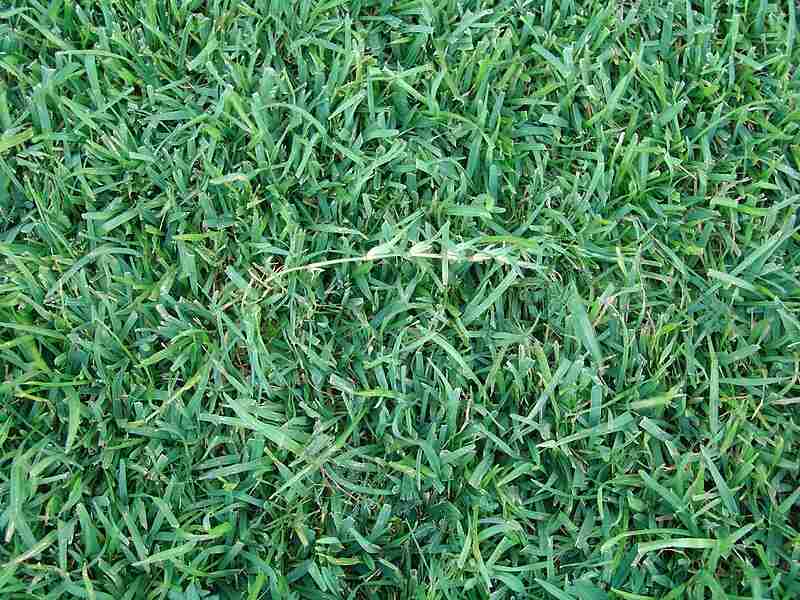
Photo Credit: James Becwar / Wikimedia Commons / CC0 1.0
Centipedegrass is a common warm-season grass in Florida, one with a rich light green color and a coarse texture. As far as warm-season grasses go, it has great shade tolerance in addition to decent drought tolerance, making it ideal for yards that don’t get as much sun or rain as their homeowners would like.
Centipedegrass is also low-maintenance and resistant to diseases and pests, so it makes a good lawn if you can’t spend too much time on yard care. It can also grow in acidic soils with low fertility that other grasses might not tolerate. Unfortunately, its poor tolerance for foot traffic makes it a poor backyard grass, but as a front yard grass, it’s a great candidate.
Classification: Warm-season
Spreads By: Stolons
Shade Tolerance: Moderate
Drought Resistance: Moderate
Foot Traffic Tolerance: Low
Maintenance Needs: Low
Mowing Height: 1-2 inches
Potential for Disease: Low
Potential for Pests: Low
Soil pH: 5-6
Soil Type: Prefers infertile acidic soils with moderate drainage. Does not tolerate clay soil
Other Notes: Poor salt tolerance
5. Seashore Paspalum
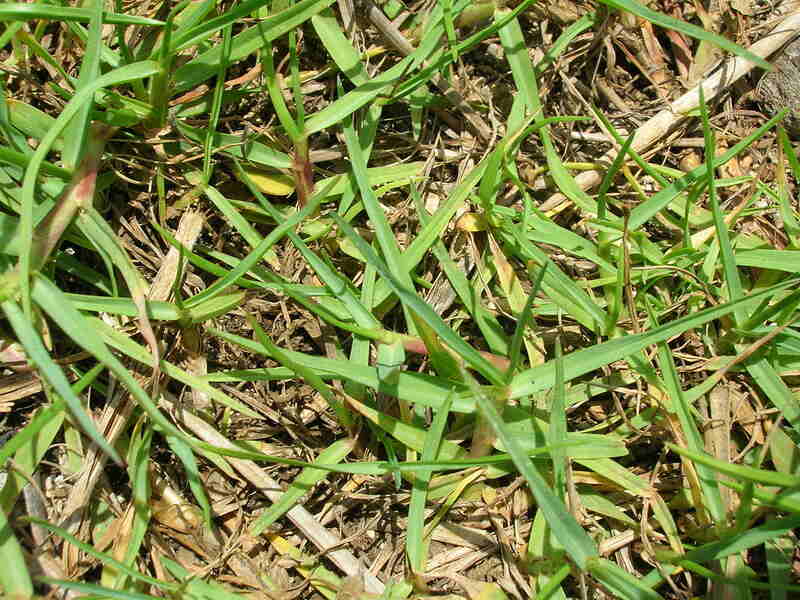
Photo Credit: Forest & Kim Starr / Wikimedia Commons / CC BY 3.0
If you’re looking for a salt-tolerant grass, then look no further than Seashore Paspalum. As its name implies, it has an exceptional tolerance for salt, making it a particularly good grass if you live right by the shore. It’s also a well-rounded grass with good tolerances across the board. Keep in mind, however, that it is moderately susceptible to diseases and insects and requires a bit of extra maintenance.
In addition to its other tolerances, Seashore Paspalum also tolerates a wide range of soil types and pH balances. If your soil can’t support any other grass you’ve tried or is too acidic or basic, then this may be the grass for you.
Classification: Warm-season
Spreads By: Rhizomes and stolons
Shade Tolerance: Low to moderate
Drought Resistance: Moderate
Foot Traffic Tolerance: Moderate
Maintenance Needs: Moderate fertilization and frequent mowing
Mowing Height: 1-2 inches
Potential for Disease: Moderate; common diseases include large patch and dollar spot
Potential for Pests: Moderate
Soil pH: 3.6-10.2
Soil Type: All
Other Notes: Highly salt tolerant and thrives in coastal regions like Pensacola
6. St. Augustinegrass
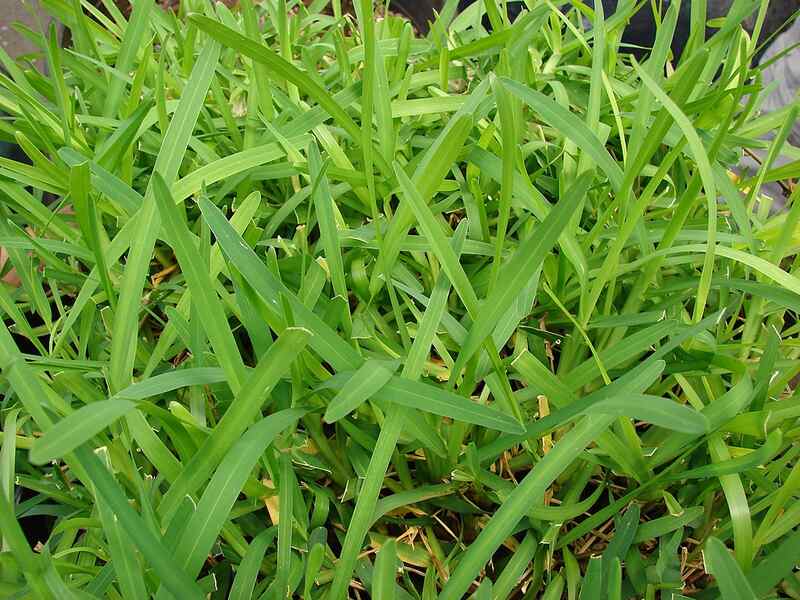
Photo Credit: Forest & Kim Starr / Wikimedia Commons / CC BY 3.0 US
St. Augustine is the most common lawn grass in Florida, and for good reason. It has great drought tolerance and is the most shade-tolerant warm-season grass available. So if cabanas and pergolas shade your yard, put St. Augustinegrass on your radar.
It grows and establishes quickly, and its coarse texture combined with its good range of colors make it a very attractive lawn.
Unfortunately, St. Augustine is somewhat vulnerable to diseases and pests and doesn’t stand up very well to foot traffic. It’s especially vulnerable to Florida’s southern chinch bug. If you choose this grass type, be prepared to put in a little extra work to help it thrive.
Classification: Warm-season
Spreads By: Stolons
Shade Tolerance: Moderate
Drought Resistance: Moderate to high
Foot Traffic Tolerance: Low
Maintenance Needs: Requires frequent mowing and regular dethatching and fertilization
Mowing Height: 3.5-4 inches
Potential for Disease: Moderate to high
Potential for Pests: Moderate to high
Soil pH: 6-7.5
Soil Type: Prefers moist, but not waterlogged, soil with moderate fertility. Does not tolerate soil compaction
Other Notes: St. Augustinegrass is the most shade tolerant of all the warm-season grass types. Good salt tolerance
7. Zoysiagrass
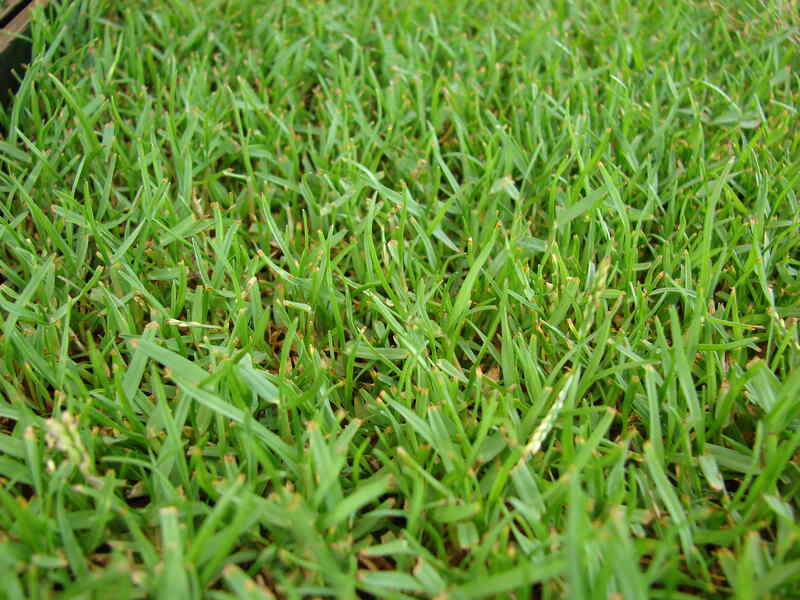
Photo Credit: Forest and Kim Starr / Flickr / CC BY 2.0
If you’re looking for a particularly hardy grass type, then Zoysia could be the one for you. It’s extremely tolerant of foot traffic and has decent tolerances for drought, shade, salt spray, and diseases and pests. Its thick blades also block weeds from growing, leaving dethatching as the only notable maintenance that you’ll need to perform.
Zoysia also comes in several different cultivars to suit your needs. Though it’s slow to recover, it’s still a good hardy grass that can thrive in many different environments, making it ideal if you have unideal conditions in your outdoor space that others can’t tolerate.
Classification: Warm-season
Spreads By: Stolons and rhizomes
Shade Tolerance: Moderate
Drought Resistance: Moderate
Foot Traffic Tolerance: High; recovers slowly from damage
Maintenance Needs: Requires occasional dethatching
Mowing Height: 1-2 inches
Potential for Disease: Low
Potential for Pests: Low
Soil pH: 6-6.5
Soil Type: Prefers a well-drained soil; preferred type will depend on the cultivar
Other Notes: Good salt tolerance
FAQ About Pensacola Grass Types
Yes. It is possible for cool-season grass types to grow in Pensacola since it’s in the northern part of the state, where the temperatures are cooler compared to the rest. Warm-season grasses will still be the better option, but if you want a cool-season grass, it’s possible to grow in Pensacola, FL.
The best time of year to plant warm-season grass seed in northern areas of Florida is spring or summer.
If your outdoor space isn’t quite right for a grass that you’ve got your heart set on, there are ways to make it work. You can look for a cultivar that better fits the conditions of your landscape, for example. The needs of many different grass types can vary among cultivars, so you may be able to find one that better suits your yard.
You can also try altering your landscape within reason to accommodate the grass you want. Trimming your trees to allow more sunlight can help sun-loving grasses thrive, for example. Finally, you can try mixing different grass seeds. Mixing the seed of the grass you want with one that’s better suited for your landscape can result in a lawn that looks great and fits the environmental conditions in your outdoor space.
If a traditional grass lawn doesn’t quite strike your fancy, then you shouldn’t have too much trouble finding an alternative. Many ground cover plants, such as clover, sunshine mimosa, and perennial peanut, can tolerate the conditions of the Pensacola area.
If you do use an alternative ground cover, however, keep in mind that Florida does experience occasional hurricanes, and that they’re particularly strong around coastal areas like Pensacola. For this reason, loose ground covers, such as gravel and stones, are not a very good idea, as they can become shrapnel.
An organic ground cover is also recommended since the strong winds and flooding possible during a hurricane may lead to erosion if your soil doesn’t have any ground cover to anchor it.
Choose Plants and Grasses for Your Pensacola Landscape
When you’re choosing a new grass type, there are many factors that you need to take into account. In addition to the usual ones, like the level of shade or how much foot traffic the grass will get, you also need to consider salt tolerance.
Pensacola, FL is a coastal city, which means that it will receive a fair amount of salt spray and salty winds. Therefore, salt-tolerant grasses will fare much better than those that are not salt tolerant. Keep in mind, however, that you can still grow grass types with poor salt tolerance if you wish. Many grass types have cultivars that are more resistant to various factors, including salinity, than the standard varieties.
If you’re having trouble with your Pensacola lawn, contact a local lawn care expert for help picking out the right grass type or maintaining your outdoor space.
Main Image Credit: Pensacola, FL / Ebyabe / Wikimedia Commons / CC BY-SA 3.0